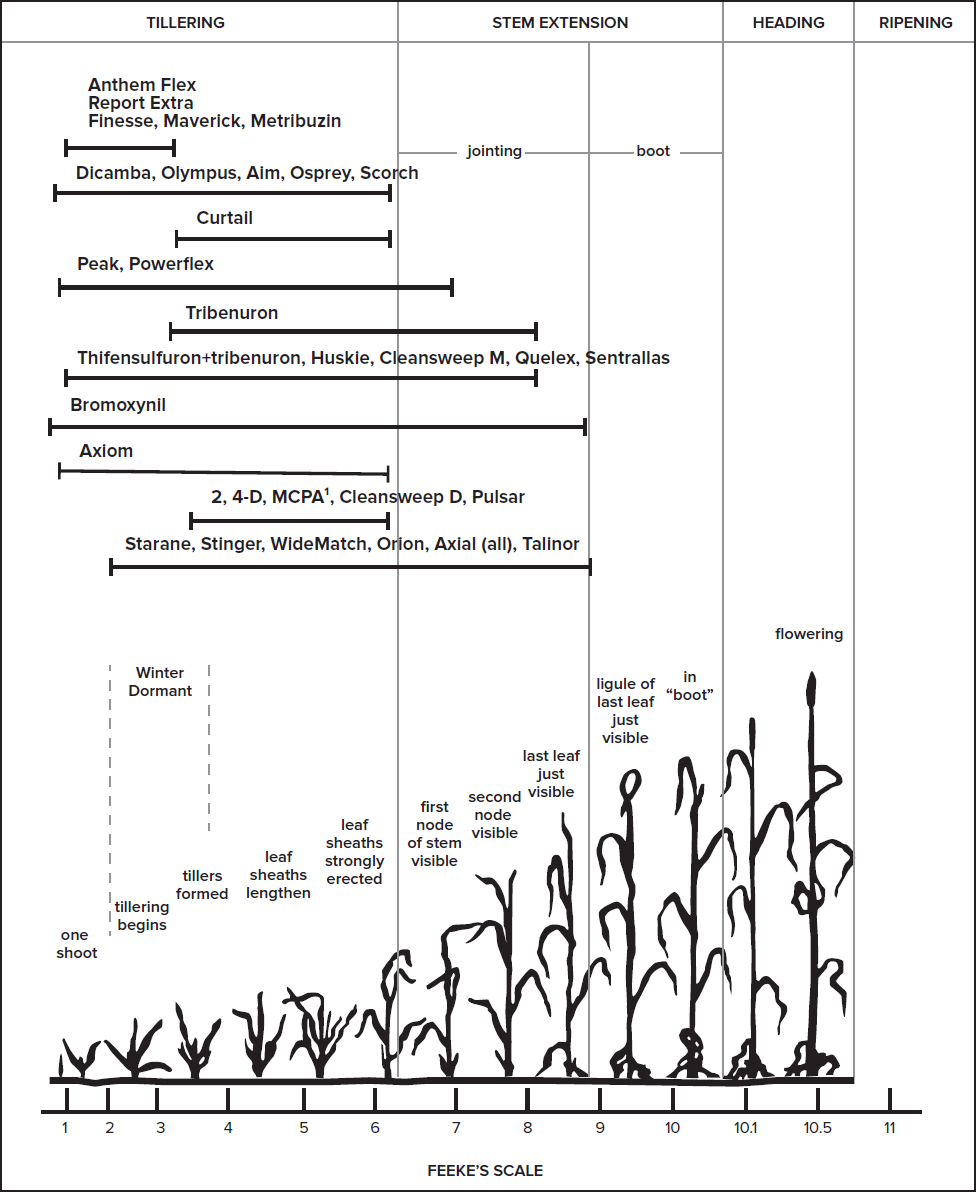The warmer temperatures experienced in Indiana over the past week and the forecast for warmer temperatures moving forward will allow winter wheat fields in Indiana to green up and resume growth. During winter wheat green up, there are a few field activities that need to be considered, including winter wheat herbicide applications and winter annual weed burndown applications in no-till fields. The following information will outline winter annual weeds to look out for, weed scouting tips, crop stage restrictions, and herbicide recommendations.
Some common broadleaf weeds to scout for in your winter wheat are dandelion, purple deadnettle, henbit, chickweed, Canada thistle, wild garlic and annual ryegrass if you are in the far southwest part of the state. These winter annual species emerge in the fall and can remain relatively inconspicuous through the winter; however, they become competitive and troublesome during the spring if not controlled early. Summer annual weeds such as ragweed will be of less concern in the early spring and will be outcompeted by the wheat crop if managed properly. Grass weeds to be aware of and scouting for are: annual bluegrass, annual ryegrass, cheat, and downy brome.
Determining the severity of weed infestations in your wheat fields is key in determining the necessity of a herbicide application. As with all agronomic crops, you should scout your entire field to determine what weed management practices need to be implemented and determine any areas of severe weed infestations. Wheat fields that contain uniform infestations of at least one broadleaf weed and/or three grass weeds per square foot should be taken into consideration for a herbicide application to avoid yield loss and harvest interference problems. Some fields that have less uniform infestations, but rather pockets of severe infestation should be managed to reduce weed seed production and future infestations.
When determining your herbicide program for spring applications, the stage of the wheat crop should be considered. The majority of wheat herbicides are labeled for application at certain wheat growth stages and some commonly used herbicides have very short windows in which they can be applied. The popular broadleaf weed herbicides 2,4-D and MCPA are efficient and economical, but can only be applied for a short period of time between tillering and prior to jointing in the early spring. Wheat growth stages and herbicide timing restriction are outlined in Figure 1.
If weed infestations are severe enough to require a herbicide application, the use of liquid nitrogen fertilizer solution as a carrier is a popular option for applying herbicides and topdressing the wheat crop in a single pass over the field. Caution should be taken when using a liquid fertilizer as a herbicide carrier as moderate to severe crop injury can result, especially in saturated soil conditions. Many post applied wheat herbicide labels allow for liquid nitrogen carriers, but require different rates and types of surfactants than if the herbicide was applied with water as the carrier. Table 1 includes precautions to be taken when applying wheat herbicides using liquid fertilizer as a carrier; further details and directions can be acquired from the herbicide label.
Another consideration growers should take into account when planning early spring herbicide applications is the plant back restrictions to double crop soybeans. A large percentage of the herbicides listed in Table 1, especially those with activity on annual ryegrass and downy brome, have soybean plant back restrictions greater than the typical three month time period between spring applications and double crop soybean planting. The soybean plant back restrictions greatly reduce the number of options available to wheat producers who double crop soybeans after wheat. Refer to Table 1 for more specific plant back timing restrictions.



